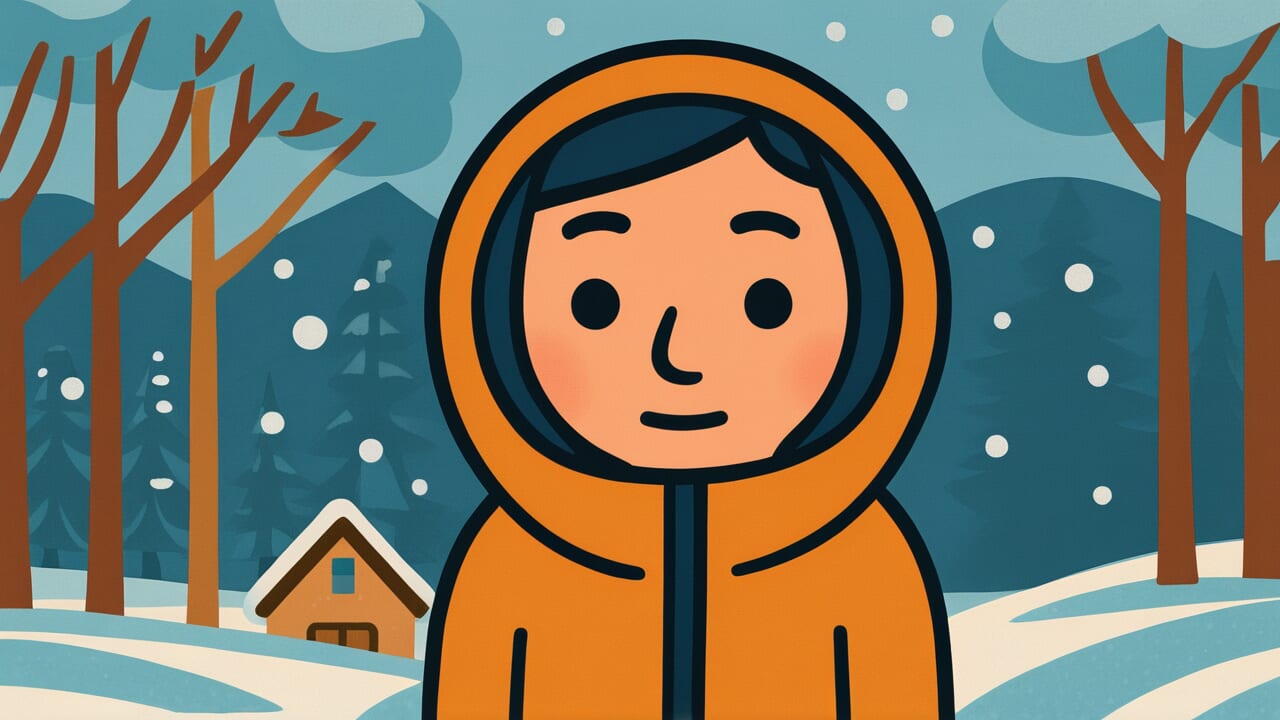How to Read “The first snow is medicine for the eyes”
Hatsuyuki wa me no kusuri
Meaning of “The first snow is medicine for the eyes”
This proverb expresses a traditional belief that seeing the first snowfall of the year has a positive effect on your eyes.
The pure white beauty of the first snow cleanses your heart and heals both your eyes and spirit.
Rather than claiming actual medical benefits, this saying expresses the spiritual value of seeing beautiful things.
It teaches the importance of not missing this special natural phenomenon and truly taking in its beauty.
Even today, when the first snow falls, people gather by windows or go outside to look up at the sky.
This behavior perfectly captures the feeling this proverb describes. By appreciating the natural beauty that marks seasonal transitions, we can heal from daily fatigue and refresh our hearts.
Origin and Etymology
The exact first appearance of this proverb in written records is difficult to confirm.
It likely has been passed down through Japanese folk beliefs and seasonal traditions.
Japanese sensitivity toward the special natural phenomenon of first snow probably gave birth to this expression.
The first snow announces winter’s arrival and is a precious moment that comes only once a year.
Its pure whiteness and the mystical beauty of snow dancing down from the sky have moved people’s hearts since ancient times.
The expression “medicine for the eyes” represents the idea that seeing good things heals mind and body.
Similar expressions like “eye nourishment” appear in Edo period literature. The belief that viewing beautiful things benefits health seems to have been widely shared.
First snow in particular has been treated as auspicious because it’s the year’s first snowfall.
The image of cleansing purity that washes away a year’s dirt combines with the meaning of a new season beginning.
This overlap gave special value to seeing the first snow.
This proverb seems to have emerged from the connection between Japanese sensitivity in appreciating natural beauty and a culture that treasures seasonal changes.
Usage Examples
- I was watching from the window this morning when the first snow fell. After all, the first snow is medicine for the eyes.
- They say the first snow is medicine for the eyes, so I plan to make sure I see this year’s first snowfall properly.
Universal Wisdom
The proverb “The first snow is medicine for the eyes” contains the essential human desire to seek beauty and the wisdom of treasuring special moments beyond the everyday.
Everyone wishes to be healed by seeing beautiful things when their heart grows weary. This has been human nature since ancient times.
Moments that come only once a year, like the first snow, awaken fresh emotions that tend to get lost in daily repetition.
Behind this proverb’s long transmission lies the truth that humans are creatures who find value in “special moments.”
Even with the same snow, the first snow you see feels special. This reflects human sensitivity that treasures “first times” and “once-in-a-lifetime” experiences in life.
This proverb also teaches the power of the act of “seeing.”
Not just letting things enter your vision, but consciously receiving beauty moves and heals your heart.
Our ancestors understood through experience the impact that aesthetic experiences through sight have on human mind and body.
Opening your heart to natural beauty and being sensitive to seasonal changes leads to a rich life.
This universal wisdom is condensed in this proverb.
When AI Hears This
When the human visual cortex receives the same pattern of stimulation continuously, nerve cell responses gradually become duller.
This is called “adaptation” and is actually the brain’s energy-saving mechanism. For familiar daily scenery, the brain decides “I already know this information, so I’ll cut corners on processing.”
For example, when you try to recall your commute scenery, it’s vague because your brain isn’t seriously processing it.
But when the unpredictable visual stimulus of first snow appears, the brain suddenly awakens.
The high reflectance of white snow has completely different brightness from ordinary scenery, sending strong signals from the optic nerve to the cerebral cortex.
Furthermore, the irregular movement of snowflakes mobilizes all the brain’s motion detection cells.
At this time, neural circuits that weren’t normally used become activated, and the neurotransmitter dopamine is released. This is the true identity of the “refreshing eyes” sensation.
Modern people look at screens an average of seven hours per day. This is the act of continuously viewing flat light at a fixed distance.
In contrast, snowy landscapes have depth perception, complex light reflection, and require moving your gaze.
In other words, first snow becomes “comprehensive neural training” that uses the entire visual system.
If monotonous environments cause neural degeneration, then natural stimuli rich in variation become the best rehabilitation.
Lessons for Today
What this proverb teaches modern people is the importance of sensitivity that doesn’t miss special moments within daily life.
In our busy everyday lives, don’t we often pass by without noticing the beauty before our eyes?
Even when the first snow falls, we pass by while staring at smartphone screens. In such modern times, this proverb’s teaching shines even brighter.
Around you are many beautiful things that can heal your heart.
It might be a natural phenomenon like first snow, or perhaps a small flower on a street corner.
What matters is the attitude of stopping and consciously trying to see it.
The expression “medicine for the eyes” teaches us that seeing beautiful things isn’t mere entertainment but something necessary for mental and physical health.
Taking time to heal eyes and hearts tired from digital screens with the beauty of real nature might actually be an essential habit for modern people.
Will you be able to truly take in this year’s first snow?



Comments